#Vascular Plants
Explore tagged Tumblr posts
Text

Fern House - Arthur Byrne
British , b. 1946 -
Lithograph print , 38.0 x 54.5 cm. Ed. 131/260.
75 notes
·
View notes
Text
March Madness Round 2 Bracket 2
Welcome back to another day of March Madness. Let's see who made it through to compete today! Our first competitor is Jaekelopterus the giant eurypterid! It crushed Arthropleura by 11 points. This arthropod is found in early Devonian rocks in Europe and North America.

It is up against the giant clubmoss relative Lepidodendron which beat out Araucaria by only two points! Lepidodendron fossils have been found across the globe in rocks dating to the Late Carboniferous all the way until the end Permian Extinction event.

#paleontology#fossils#science education#science#geology#march madness#science side of tumblr#vascular plants#arthropods
49 notes
·
View notes
Text
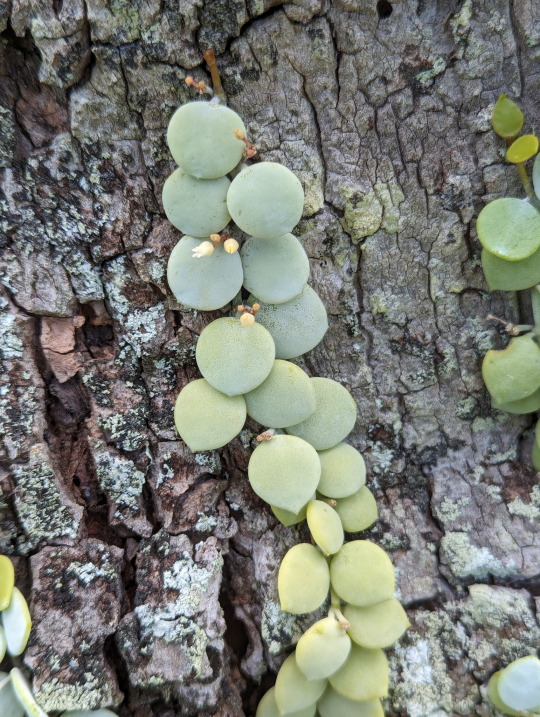
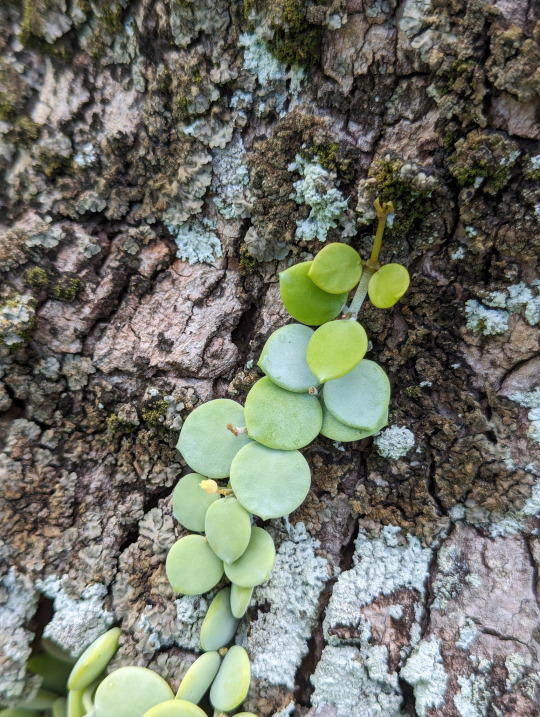

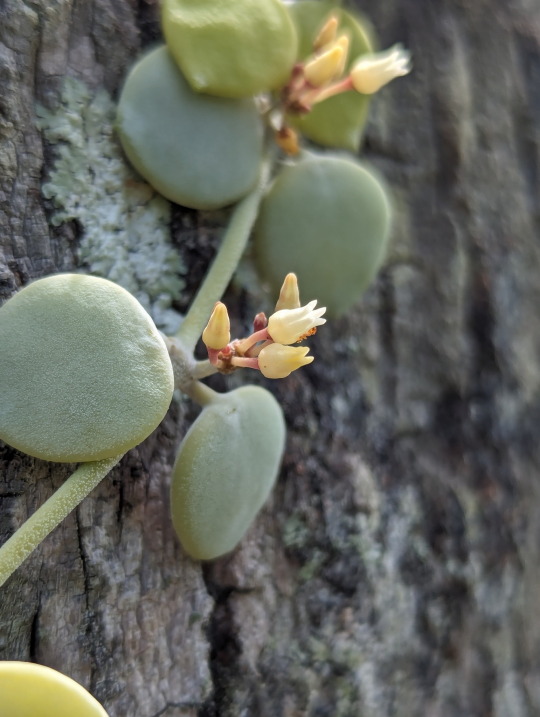

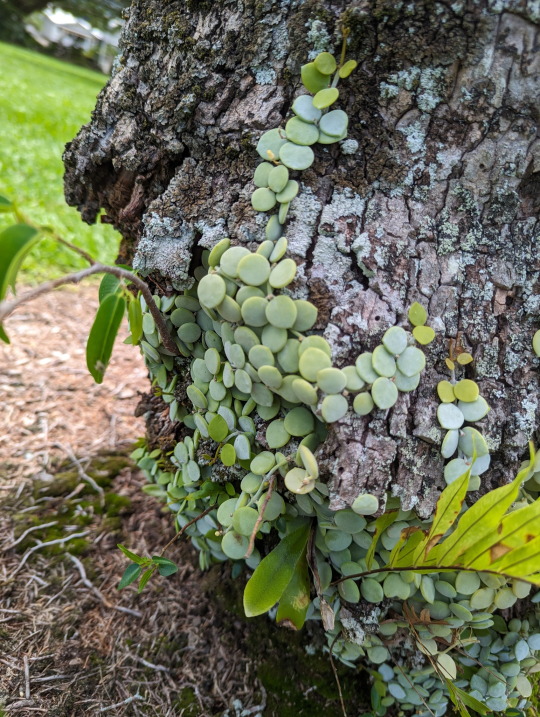
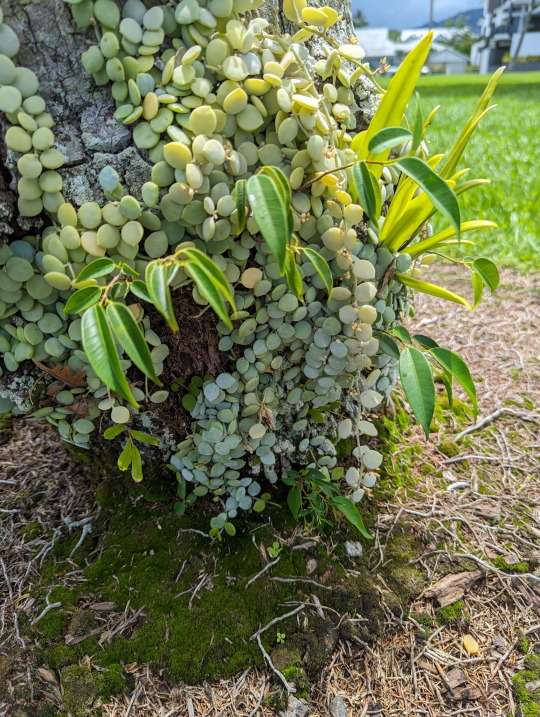
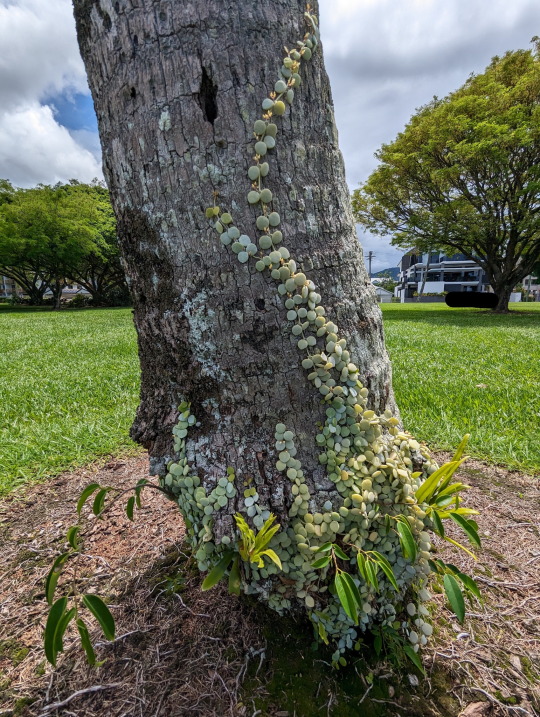
Beautiful button orchid growing on a palm tree.
17/01/24 - Dischidia nummularia
QLD:WET - Cairns
#nature#Dischidia nummularia#Button Orchid#Plantae#plants#botany#Milkweeds#Gentianales#Magnoliopsida#Dicots#Angiospermae#Flowering Plants#angiosperms#Tracheophyta#Vascular Plants
165 notes
·
View notes
Text
None of you thought it might be important to tell me that ferns have sperm that swim???
So.
None of you thought it might be important to tell me that ferns have sperm that swim??? I just had to find all this out on my own?
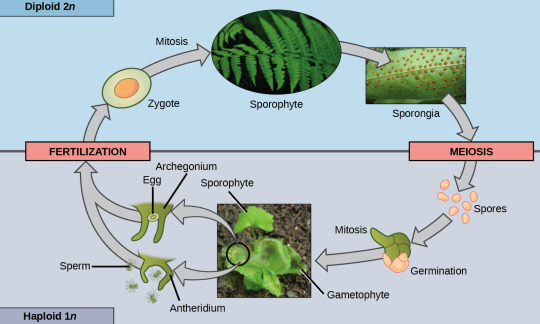
And, (apparently, & no one thought to bring this up either🙄) fern plants are only one form… they have this 'other form' (tiny, ephemeral, difficult to find in the wild) alternates generations-- Fern spores don't grow into ferns! (WHAT) they grow into 'gemetophytes' (WHAT) THEN you get a fern.
Feel like I've uncovered a massive scandal.
#plants#biology#reproduction#ferns#spores#gemetophytes#sporophyte#learning#meiosis#Polypodiopsida#Polypodiophyta#vascular plants#land plants#gametes#seeds#zygote#reproductive cycle
63 notes
·
View notes
Text
Phytodiversity and Ecological Evaluation of Vascular Plants in Mir Ali, North Waziristan

Abstract
Ecological research was conducted during 2016-2019, to assess the floristic diversity and biological spectra of vascular plant species in Mir Ali Subdivision,North Waziristan, Pakistan. The floristic list consisted of 336 plant species belonging to 229 genera and 79 families. There were 269 dicots, 60 monocots, 4 gymnosperms and 3 pteridophyte species. Poaceae (44 Spp., 13.09 %) and Asteraceae (28 Spp., 8.33 %) were leading families. Life form classes was dominated by Therophytes (171spps. 50.9%) followed by Nanophanerophytes (43 spps., 12.79%) and Megaphaneropyhtes (37 spps., 11.01%). Leaf size spectrum showed that leading leaf size classes were Nanophylls with 139 (41.4%) species, Microphylls 65(19.34%) species and Leptophylls consisted of 52 (15.5%) species. There were 313 (93.15%) deciduous species, 20 (5.95%) evergreen species and 3 (0.9%) aphyllous plant species. There were 283 (84.22%) non spiny plants and 53 (15.78%) spiny plant species. 276 (82.14%) species lived in terrestrial habitat and 60 (17.86%) dwelled in mesic habitat. The light requirements showed that 332 (98.8%) species found in light condition while 4 (1.2%) grow in shady places. 243 (72.32%) plants grow wild and 93 (27.67%) were cultivated plant species. 233 (69.35%) species had simple leaf structure while 52 (15.48%) plants possessed compound leaf structure. The phenology showed that 223 (66.36%) species were found at reproductive (S2), 84 (25%) pre-reproductive (S1) and 29 (8.63%) at post-reproductive (S3) stages. Atmospheric, edaphic and biotic factors effect distribution of plant species. The study concluded that the area has rich plant biodiversity which is subjected to heavy biotic pressures of grazing and deforestation. Conservation measures, sustainable utilization and further research are recommended.

Introduction
Mir Ali is a subdivision in North Waziristan Tribal district (FATA) Pakistan, adjoining District Bannu and falls under Inrano-Turanian Region (Ali and Qaiser, 1986). It is divided into three Tehsils namely, Mir Ali, Spinwam and Shawa. Its lies between 32059/12// to 3301 /16//N Latitude and 70015/24// to 70017/21 //E Longitude with an altitude of 655 m (2152 feet). The area is surrounded by mountains which are connected with Koh-e-Sufaid in the North and Koh-e-Sulaiman in the South. The climate of the area is cold in winter with temperature ranging from 15 0C to 23 0C and hot in summer with temperature varies from 310C to 42 0C and classified as subtropical. The area is fertile and cultivable which is irrigated by three rivers namely, Tochi, Katu and Kurram rivers. The area receive 45 mm monsoon rainfall (Ali and Qaiser, 1986). The forest cover is weak and the soil is mostly shallow and calcareous. Livestock, fuel wood and medicinal plants collection are generally practiced in the research area.
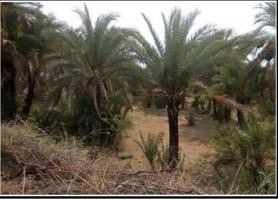
Floristic diversity and its ecological characteristics depend upon prevailing environment, topography and existing ecosystem types. The various characters of flora such as life form, leaf size, phenology and other morphological features reflect the existing ecological and habitat conditions. A rich floristic diversity means favorable growing conditions. Listing of species is required for ecological plant resource management. Many studies for listing floristic diversity and its ecological behavior have been done at home and overseas, for suitable documentation and maintainable consumption of plants (Rafay et al., 2013). The information about vegetation of any area is important for the learning of biodiversity (Badshah et al., 2010). Biological spectrum suggested by Raunkiaer (1934) is the proportion delivery of diverse life-forms for particular vegetation. It can be used as a key for comparing actually detached plant groups, controls layering and stratification design of a community, nature of phytoclimate and its ambient pressure issues (Gazal and Raina, 2015). The lifeform arrangement is a significant physiognomic characteristic that expresses the coordination among plant and its surroundings (Shimwell, 1971). Leaf size spectrum delivers an awareness of the floristic version and is beneficial for exploring plant relations in relative to the dominant climatic features and thus can help in studying flora at local level (Rashid et al., 2011). Bibi et al. (2016) studied the structure and floristic composition of 30 species of road sides and central green belt of Motorway (M-1) from Peshawar to Charsadda Interchange. Shaheen et al. (2015) studied 205 plants species which belonged to 78 families with Asteraceae and Lamiaceae as dominant families. Hussain et al. (2015) identified 571 species belonging to 82 families while reporting the floristic diversity of Mastuj valley; district Chitral, Hindukush Range, Pakistan. Ullah et al. (2015) prepared a checklist of 107 plant species belonged to 90 genera and 49 families of Sheikh Buddin National Park, Dera Ismail Khan, Pakistan. Durrani et al. (2010) studied 123 plant species of 36 families from protected sites and 28 species from unprotected sites from Aghberg rangeland, Balochistan. Saima et al. (2009) studied 167 plant species of 65 families from Ayubia National Park, District Abbottabad. Badshah et al. (2013) studied the floristic diversity and ecological features of vegetation of District Tank. Sher et al. (2014) worked on the diversity and ecological structures of vegetation of Gadoon, District Swabi. Khan et al. (2017) identified 264 plants species belonging to 90 families and 202 from Swat Ranizai of District Malakand, Pakistan. Ali et al. (2017) identified104 plant species belonged to 46 families and 95 genera in Sherpao, Charsadda, Pakistan. Haq et al. (2018) documented 183 plant species from Keran valley of northwestern Himalya in which 37% therophytes were dominant life form. Khan et al. (2018) identified 80 plant species belonged to 45 familiesin Thandiani forest Abbotabbad, Pakistan. Samad et al. (2018) identified 80 plant species belonged to 45 families in Lala Kalay, Peshawar, Pakistan in which Asteraceae and Solanaceae were the leading families with 6 species each. Ahmed et al. (2019) studied 352 plant species belong to 150 genera and 82 families in which 31.25% were hemicryptophytes dominant life form spectra in the area of Kotli Sattian Kahtta national park Murree, Pakistan. Amber et al. (2019) studied 133 plant species of 52 families from Mahnsehra, Pakistan. Anwar et al. (2019) studied 195 plant species belong to 63 families from Liakot forest in kalam region of district Swat. therophyte (86 spp.) was dominant life form and nanophyll (73 spp.) was dominant life size class followed by microphyll (66 spp.) and mesophyll (44 spp.).Iqbal et al. (2019) identified the floristic composition of 36 grass species belonging to 23 genera of west region of D.G.Khan, Pakistan which help in ecological and biological spectra of research area.
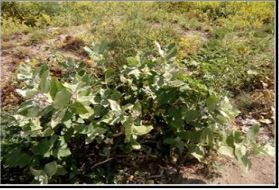
Mir Ali subdivision is botanically less explored. Some references are available on weed flora of rain fed maize fields ofMir Ali (Wazir et al., 2014), flora and vegetation of gymnosperms of Razmak (Daud et al., 2013) and medicinal plants in North Waziristan (Qaiser et al., 2013). No other reference on the plants of Mir Ali is available. The present effort recorded the diversity and ecological features of plants of Mir Ali subdivision that will help in future researchers.
Source : Ecological evaluation and phytodiversity of vascular plants in Mir Ali, North Waziristan, Pakistan
1 note
·
View note
Text

*me walking up to a cardoon*
Umm... Ch-chh-cheesed to meet you...


Cardoon, aka artichoke thistle, from the top down.
Exhibited at the Clark County fair by Andrea Sayler
#artichoke thistle#cardoon#Cynara cardunculus#artichoke#cynara#asteraceae#thistle#compositae#asterales#composite flowers#asterids#eudicots#angiosperms#flowering plants#tracheophytes#vascular plants#plants#cheese#vegan#vegan food#vegan food alternatives#vegetarian food alternatives#food alternatives#cheese alternatives#vegan alternatives#food#cooking#flowers#pretty#purple
24 notes
·
View notes
Text
They should make a Star Trek-themed educational TV series where real scientists dress up as Starfleet officers, pretend to beam onto an alien planet with one or two attributes related to their field of study, and then explain the science behind those things.
#the valley is posting#the show is called 'strange old worlds' in a nod to our old world and how wonderfully weird it is#geologists 'discover' alien cyanobacteria and start talking about the great oxygenization event on earth#paleobotanists get really excited over fossils of vascular plants and explain why that's important#a physicist who's just super into optics and waxes poetic about ultraviolet radiation
17 notes
·
View notes
Text
Whilst you were out touching grass, I was touching moss you fool!
#moss#plants#bryophytes#botany#mosses#im simply better#non-vascular plants my beloved#fukign love moss my dudes#like#you don't even know#its my favouritest thing ever#awarded “Best Thing”
170 notes
·
View notes
Text

I didn't explain.
The lycophyte is very important role in history of planet Earth during Silurian period 🤢
#ognimdo2002#earth responsibly#science fantasy#devonian#Zosterophyllum#plant#Silurian#paleoart#paleoctober#paleontology#Vascular plant#Lycophyte#extinct#ibispaint art
34 notes
·
View notes
Text

#IFTTT#Flickr#genoplesiumdensum#genoplesium#densum#sydney#nsw#australia#plantae#plant#tracheophyta#vascular#angiospermae#flowering#liliopsida#monocot#asparagales#orchidaceae#orchid#orchidoideae#orchidoid#diurideae#prasophyllinae#midge#orchids#flower#nature#2024#wildlifephotography#naturephotography
2 notes
·
View notes
Text
I told myself I was going to write this weekend, but instead, i hyperfixated on grabbing references for what Vash's wings are actually like
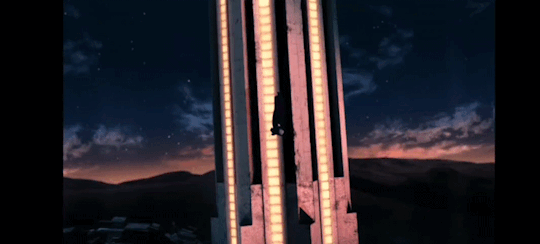



I can write about fluttering feathers all I want, but my autism knows that's not Right
There are more scenes that I didn't get around to grabbing, but I realized that might be pointless, because his wings in episode 12 are probably a panicked defense action and will settle on a more solid form the more he uses them.
For now, they're rather inky-black, solid elongated structures throughout the mass, with small blobs(reminiscent of wild trailing jade) flowing from his back into the "wing" itself
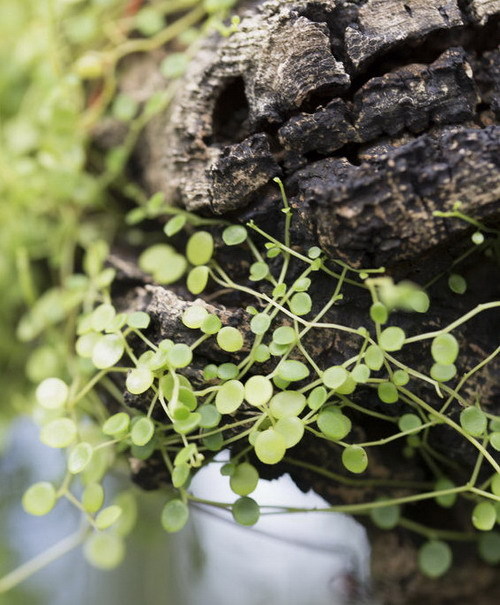
🥺 the worst part is, it's probably made up of his plant sap, and it's so dark because it's contaminated/wounded from Kni forcing himself inside and accelerating Vash's root growth beyond anything reasonable.
#trigun stampede#tristamp#wings#reference gifs#vash#plants have a vascular system#and I'm saying that's his “blood”#ramble
37 notes
·
View notes
Text
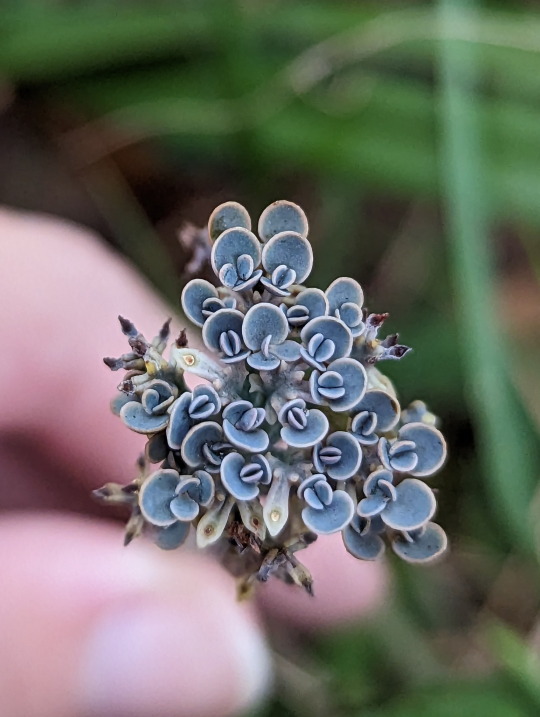
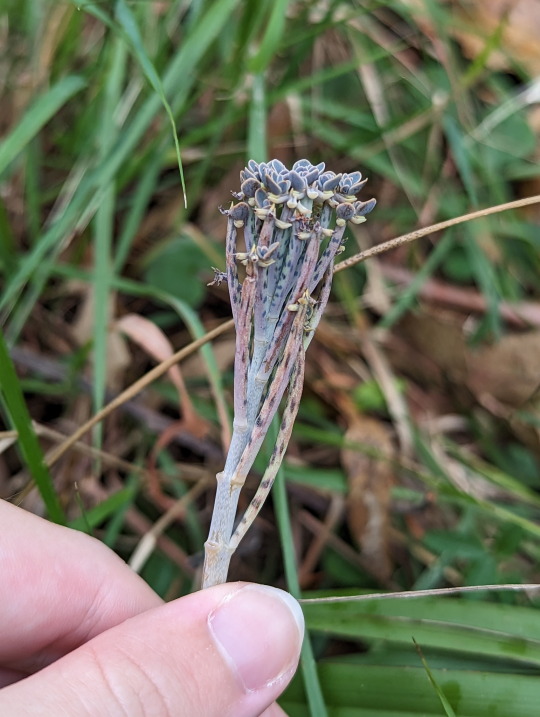
Mother-of-Millions
Kalanchoe delagoensis
20/03/23 - NSW
#Kalanchoe delagoensis#Mother-of-Millions#Kalanchoe#Kalanchoes#Crassulaceae#stonecrops#Magnoliopsida#Dicots#Angiospermae#angiosperms#Flowering Plants#flowers#Tracheophyta#Vascular Plants#Plantae#Plants#botany
351 notes
·
View notes
Text

Marchantia polymorpha, a fire-following liverwort Dixie Fire Burn Scar Lassen Volcanic National Park, August 2024
#photo#plants#lassen#lassen volcanic national park#liverworts#marchantia#fire followers#not a wildflower! not an angiosperm#not even a vascular plant#don't need to be vascular to be charming!
2 notes
·
View notes
Link
1 note
·
View note
Text
honestly i think in general i need to do more research into plants because magic-based life would operate much more like plants than animals, even if they look closer to animals (most of the time)
#all the care guide says is 'biomass'#thinking again about how plants just have three organs. the roots the shoots and the leaves.#and how even vascular plants dont pump the water through their tubes. its just how theyre Shaped that pulls it up#and concentration gradients.......#i need to finally draw damien again demons keep getting weirder every time i look at them#he is so upsetting. combination garden of earthly delights and fall of the rebel angels#and ai generated video and plant anatomy#still thinking about how demons dont actually see through any eyes they have nor need eyes to see at all#because they just. all of their body sees. all of their body has all of their senses all the time#its not concentrated on a singular body part because they dont have singular body parts in the same way#like you have sawyer who has no eyes at all but sees the same as damien and dahlia#because theyre not actually sensory organs
4 notes
·
View notes
Text







Look upon my beautiful mosses and weep (tears of joy), for there is nothing better than these!!
#plants#botany#moss#mosses#moss post monday#moss posting#bryophytes#non vascular plants my beloved#i love these little moss terrariums so much!#and yes all these pictures of moss I've been posting are mine
55 notes
·
View notes